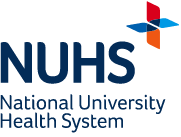Neuro-Ophthalmic conditions include Optic Neuropathies and Eye Movement Disorders.
Optic Neuropathies
The optic nerve is the only nerve in the body that can be directly examined by a doctor. Similar to an electrical cable, it connects the eye to the brain, bringing visual information for processing.
It can be affected by:
Inflammation of the optic nerve can be due to infections, vaccination or autoimmune conditions.
- Ischemia (inadequate blood supply)
Commonly known as “stroke of the optic nerve”, Ischemia occurs when the optic nerve receives inadequate blood supply and oxygen. It is commonly related to other vascular diseases such as hypertension and diabetes.
Compression of the optic nerve can be caused by benign or malignant tumours, blood vessels or enlargement of normal structures within the orbit.
- Raised intracranial pressure
Raised intracranial pressure, or rise in pressure around the brain, may be accompanied by other non-visual symptoms.
Eye Movement Disorders
Eye Movement Disorders can be a result of brain, nerve, neuromuscular junction or muscle pathology. At times, abnormal movement or balance of the eyes can be related to a problem elsewhere, like the ears.
Many diseases affect movement of the eyes. These include:
- Local (orbital) disease causing restriction of movement.
- Disease affecting the nerves to the muscles causing weakness.
- Diseases affecting the transmission of signals between nerve and muscle
- Diseases of the muscle
- Diseases affecting portions of the brain that control movement
The vision in each eye (when tested separately) is often normal. However, visual disturbance occurs when both eyes are used.
Eye Movement Disorders that occur suddenly require urgent medical attention to rule out serious conditions such as the rupture of blood vessels supplying oxygen to the brain.
Investigation and treatment is directed at the cause of the Eye Movement Disorder.

















